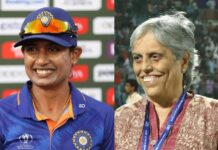The world we live in is inherently patriarchal in nature and its treatment of human behaviour. So quite disappointingly but unsurprisingly, films narrate stories with the same patriarchal treatment as well.
While men are shown off as always physically and mentally strong, heroic in their every action, the women in these stories are reduced to the stereotypical nurturing, caring, mother-like fragile dolls, with overwhelmingly aesthetically pleasing physical attributes.
These women are always ready to make sacrifices, for the hero, but also always in need of protection, by the hero. In simpler words, these women are only present in the stories to gear the narrative of the male protagonist in the right direction, with little to no insight into the narratives of these women independent of the ‘heroes’.
The women characters are also put on ridiculously high moral grounds in the societal structure, with neither any sexual spectrum nor any emotional spectrum, performing only to fulfill their predetermined duties of a daughter, a sister, a mother, without being a person of her own.
Read More: Watch: 5 Independent Indian Films That Deserve More Recognition
Like the obedient, ever passive individuals that they are, these women never realise or acknowledge their own sexuality or sexual desires, but are always present to actualize the sexual desires of the men in the narratives without fail, urging a hormonal fixation on these women from the viewers, in result, urging an ultimate fixation and favouritism on the film in an entirety from the viewers.
Now it is to be understood, that when we are talking about viewers, we, or rather, the film industry has already assumed the viewership to be majorly consisting of cis-gendered heterosexual men and work towards satisfying their intellectual needs and theirs only.
This treatment of dealing with a story is what has been termed as the ‘male gaze’. Laura Mulvey in her critically acclaimed essay ‘Visual Pleasure and Narrative Cinema’, first coined the term male gaze and went on to explain it.
But times are changing and with it, the stories that are being told. So here are 5 films that break the pattern of the male gaze, humanise characters and tell us the stories through the ‘female gaze‘.
Hope you enjoyed these films as much as I did and have encouraged you to dig deep and change your perspective as a viewer as well.
Image Credits: Google Images
Sources: BBC, The Guardian, Studiobinder
Find the Blogger: Nandini Mazumder
The post is tagged under: film industry, coming of age, sexuality, patriarchy, patriarchal, treatment, human behaviour, stereotype, hero, heroine, male gaze, female gaze, Laura Mulvey, Lipstick Under My Burkha, Alankrita Shrivastava, Ajeeb Daastaans, Geeli Pucchi, Neeraj Ghaywan, Portrait of a Lady on Fire, Céline Sciamma, We Need To Talk About Kevin, Lynne Ramsay, Breathe, Mélanie Laurent, motherhood, friendship, dalit, caste, mother, girlfriend, lipstick, stereotype, sexism, feminism, film, cinema, movie, story, narrative, Visual Pleasure and Narrative Cinema’
Other Recommendations:
Watch: How Artists Use Colors To Communicate Complex Emotions
































